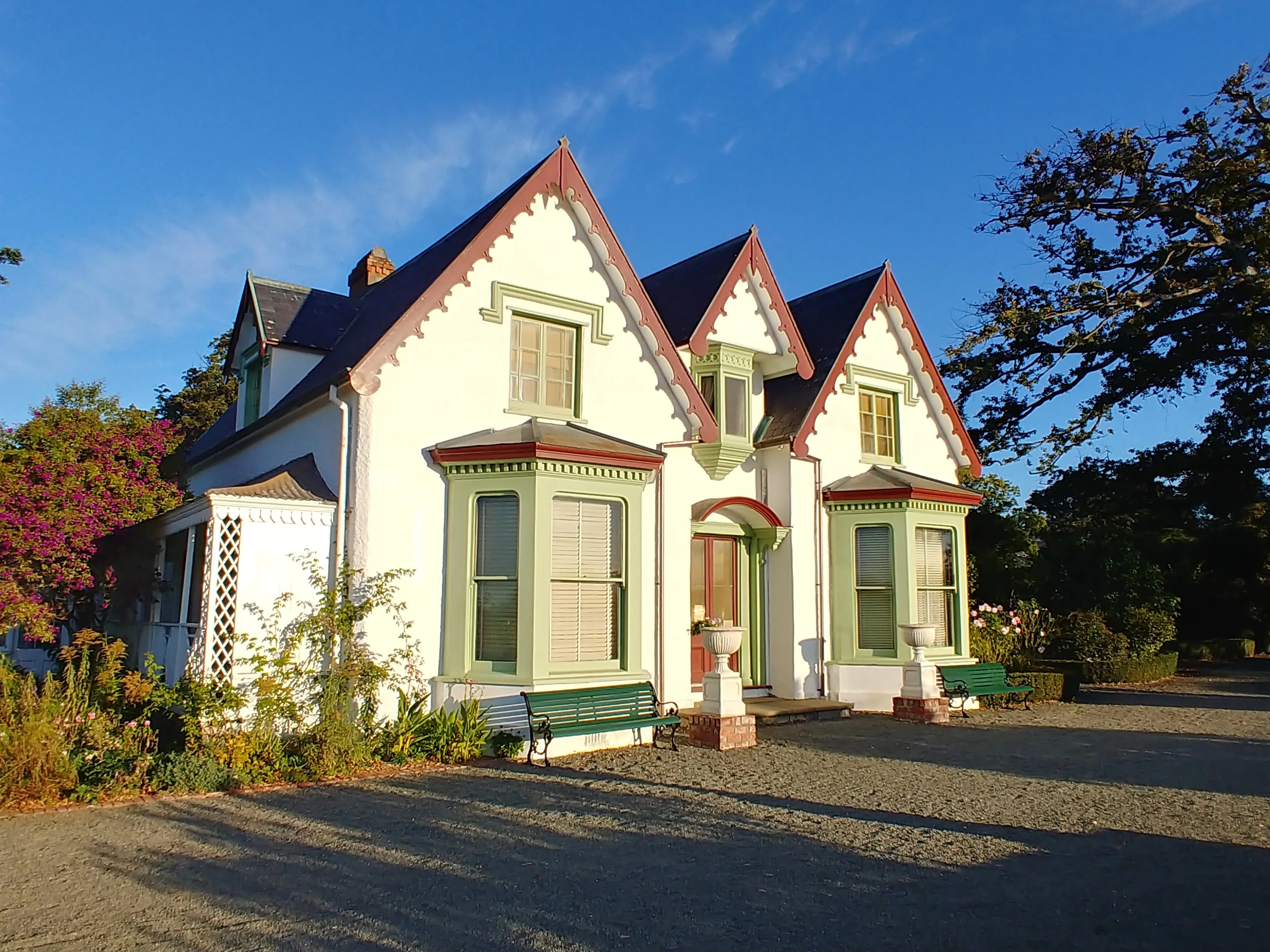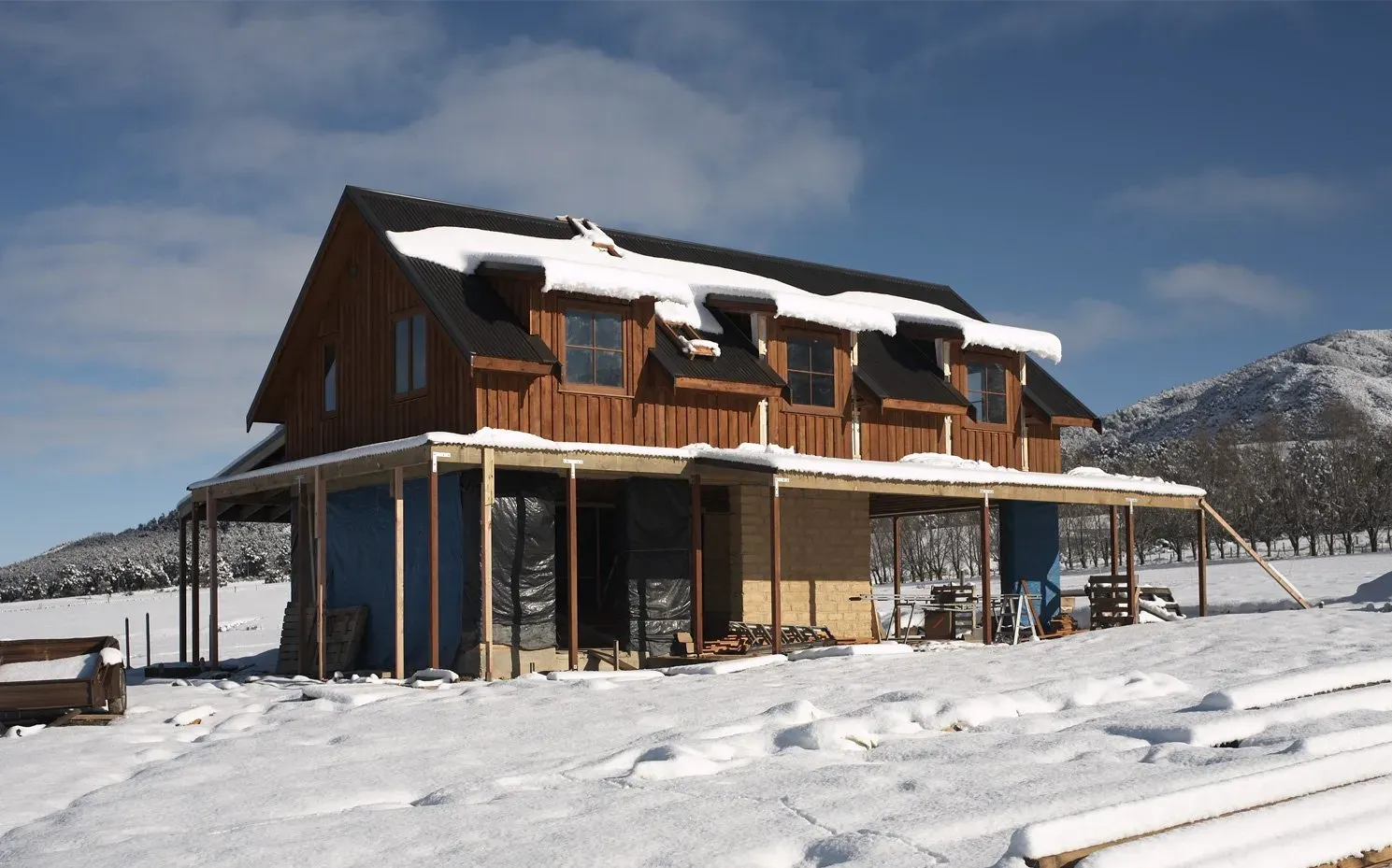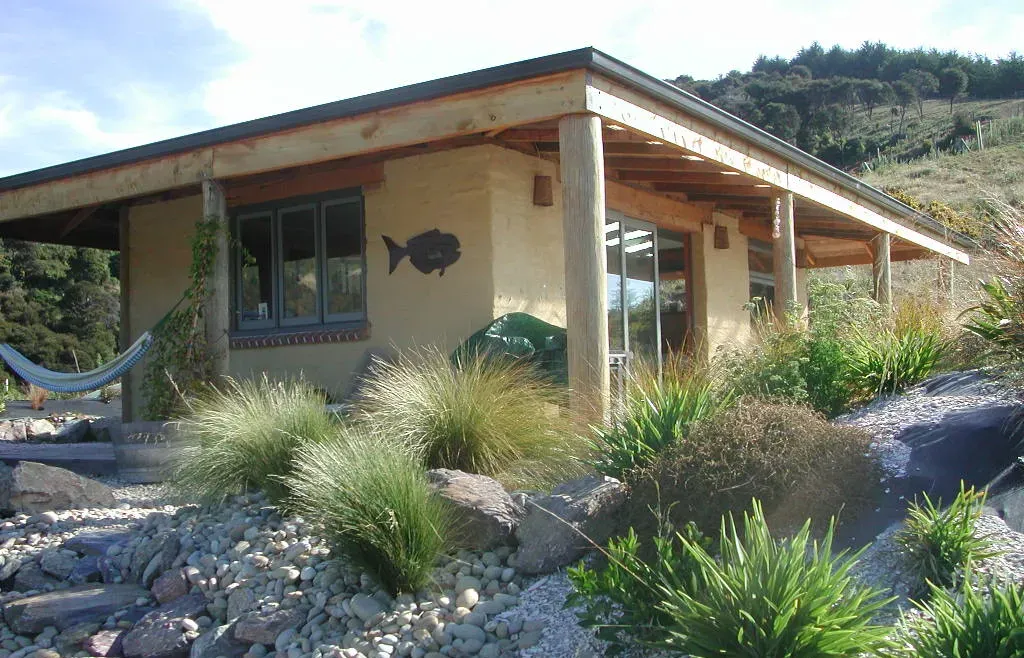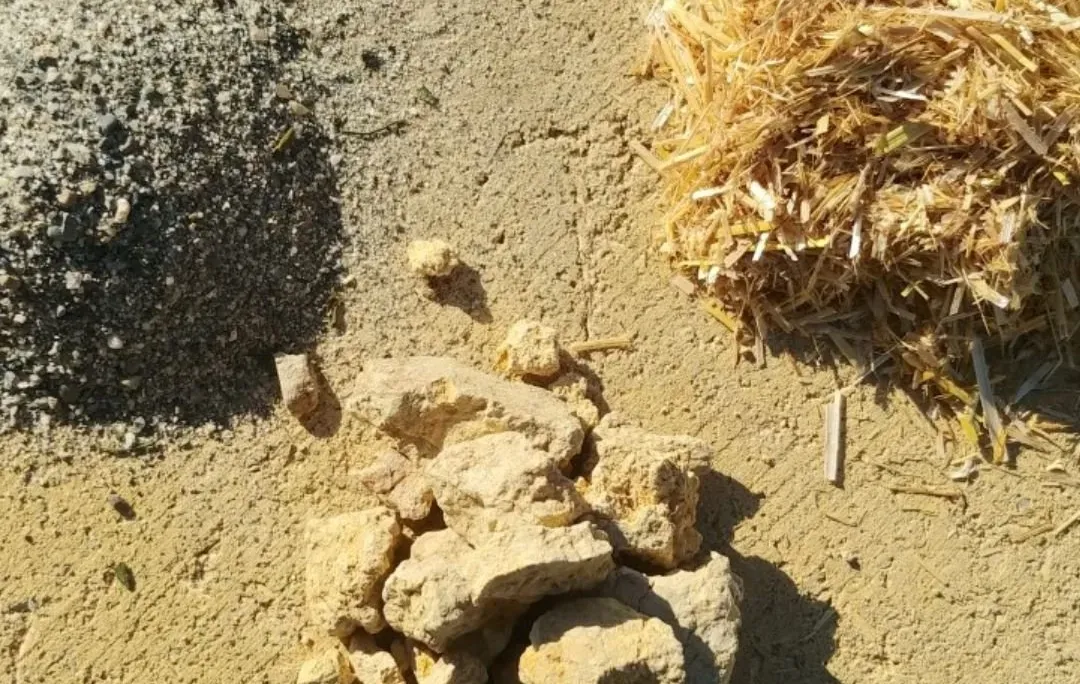Breathable Homes: The Advantages of Using Earthen Plasters for Retrofitting
Imagine a home that feels like your third skin (after your clothes ), a living space that has the ability to "breathe" with you, regulating humidity and improving indoor air quality. This isn't a futuristic concept; it's a return to one of the most basic and beneficial building materials known to humanity—earthen plaster. As we retrofit our homes for the future, we're rediscovering the wisdom of the past.
When we talk about retrofitting homes, it's not just about upgrading; it's about transforming our living spaces into eco-friendly sanctuaries. Earthen plasters play a pivotal role in this transformation. Let's delve into why these natural materials are not just good for the earth, but great for our homes and health.
Key Takeaways: Article-at-a-Glance
- Earthen plasters offer exceptional indoor air quality benefits.
- They naturally regulate humidity and temperature.
- These plasters are non-toxic, reducing allergens and pollutants.
- Earthen plasters are durable and have a unique aesthetic appeal.
- They can be cost-effective and contribute to energy savings.
Indoor Air Quality Concerns
Before we jump into the 'how' and 'why' of earthen plasters, let's consider the 'what'. What's at stake here? Indoor air quality. It's a big deal. The air inside our homes can be two to five times more polluted than the air outside, according to the EPA. From chemicals in paints and finishes to mold and mildew, our homes can harbor unseen enemies that affect our health.
Now, let's change that. Earthen plasters offer a breath of fresh air—quite literally. They're made from natural materials that don't off-gas harmful chemicals. But that's just the beginning of their benefits.
Defining Earthen Plasters and Their Composition
So, what exactly are earthen plasters? In simple terms, they're a mixture of clay, sand, and optional straw or fiber, applied to walls for a natural finish. The clay acts as a binder, sand provides strength and structure, and straw gives flexibility. This trio, sourced directly from the earth, has been used for centuries to create homes that stand the test of time.
Understanding the Benefits of Earthen Plasters for Indoor Air Quality
Earthen plasters are like the lungs of your home. They "breathe" in and out, absorbing excess moisture when the air is damp and releasing it when the air is dry. This natural humidity regulation is a game-changer for indoor air quality. It means a more comfortable living environment and less chance for mold growth.
But there's more. These plasters also absorb odors and pollutants, thanks to the natural properties of clay. They act like a filter, purifying the air you breathe every day.
Natural Regulation of Humidity and Temperature
Ever noticed how some homes just feel better? The air is fresher, the temperature is more stable, and you feel more relaxed. Chances are, natural materials are at work. Earthen plasters excel in thermal mass, which means they can absorb and store heat, releasing it slowly over time. This helps to keep your home cool in the summer and warm in the winter, reducing the need for heating and cooling.
And when it comes to humidity, these plasters are no less impressive. They can absorb up to 30% of their weight in water without feeling damp. This means they can help manage the moisture levels in your home, preventing that sticky feeling on humid days and keeping the air just right for your health and comfort.
Non-toxic and Allergen-free Living Environments
For those with allergies or sensitivities, home can sometimes feel like a battleground. Synthetic materials and chemicals can trigger reactions, making it hard to breathe easy. Enter earthen plasters. They're free from the volatile organic compounds (VOCs) found in many conventional building materials, offering a safe haven for the health-conscious homeowner.
Moreover, because these plasters are made from natural earth, they don't support the growth of bacteria or fungi, which are common allergens.
Many homeowner who retrofit earthen plasters report a significant reduction in symptoms and an overall improvement in well-being. This is the power of going back to basics with building materials.
Earthen plaster is:
- Free from harmful VOCs and synthetic toxins.
- Doesn't support the growth of mold or mildew.
- Reduces common allergens in the home.
- Improves overall indoor air quality.
- Creates a healthier living environment for families.
Earthen Plasters' Role in Sustaining Healthy Indoor Air
So, we've established that earthen plasters can do wonders for your indoor air quality. But how do they sustain it? It's all about balance. These plasters interact with the environment, continuously working to maintain a healthy equilibrium in your home. They don't just cover up problems; they actively work to solve them.
Think of it this way: Instead of using air fresheners to mask odors or dehumidifiers to tackle dampness, earthen plasters handle these issues naturally. They're a passive solution to creating and sustaining a healthy indoor atmosphere.
Practical Application of Earthen Plasters in Home Retrofitting
Now, let's talk about the nitty-gritty—how to actually integrate earthen plasters into your home. Retrofitting with earthen plasters isn't just slapping on a new coat of paint; it's an art and a science. It's about respecting the old while embracing the new.
Whether you're dealing with a century-old farmhouse or a modern townhouse, earthen plasters can be tailored to enhance your home's unique character. It's a transformative process that not only improves the aesthetic of your space but also its functionality and sustainability.
Strategies for Integrating Earthen Plasters into Existing Structures
First things first, assess your walls. If you have drywall, you're in luck; earthen plasters can be applied directly over it with some basic preparation. For other surfaces, a little more elbow grease might be required, but don't worry, the end result is worth it.
Here's a quick guide on how to prepare different surfaces for earthen plaster:
- Brick or Stone: Clean off any loose material and dampen the surface before application.
- Existing Plaster or Drywall: Ensure the surface is clean and apply a bonding agent if necessary.
- Wood: Install a mesh or lath to provide a key for the plaster to grip onto.
Once your surface is ready, it's time to mix your plaster. The beauty of earthen plasters is in their simplicity. Local clay, sand, and straw are often all you need, and these can be sourced sustainably, keeping your carbon footprint low.
Applying the plaster can be a DIY project or you can bring in a professional. Either way, it's an opportunity to add texture and personality to your home. And remember, this isn't just about looks; it's about creating a healthier living space.
Here's a tip: When applying earthen plaster, work in layers. Start with a thicker base coat to even out imperfections and finish with a finer topcoat for a smooth look. Allow each layer to dry thoroughly before applying the next. This not only ensures a strong bond but also maximizes the plaster's ability to regulate humidity and temperature.
And for those worried about durability, let me put your mind at ease. When properly applied, earthen plasters can last for decades, with minimal maintenance required. They're not just a sustainable choice; they're a smart investment in the longevity of your home.
Imagine the satisfaction of knowing your walls are not just beautiful but also contribute to a healthier planet and a healthier you. That's the promise of retrofitting with earthen plasters.
Longevity and Durability of Retrofitted Surfaces
Let's talk staying power. When you invest in a home improvement, you want it to last. Earthen plasters are not a new trend; they've been tested by time. Properly maintained earthen plaster walls can last for generations. They're resistant to cracks thanks to the natural fibers within, which provide flexibility. Plus, any minor damage can be easily repaired with the same plaster mix, making them a low-stress option for long-term durability.
Here's another pro tip: To extend the life of your earthen plaster, apply a breathable, natural sealant like clear casein glaze. This will add an extra layer of protection while still allowing the walls to breathe.
Comparative Analysis: Earthen Plasters vs. Conventional Materials
When comparing earthen plasters to conventional materials like gypsum or cement-based plasters, the differences are clear. Conventional plasters often contain chemicals and require energy-intensive manufacturing processes. They don't regulate humidity or purify the air, and they can contribute to poor indoor air quality.
On the other hand, earthen plasters are made from abundant, natural materials with minimal processing. They're energy-efficient, not just in production but also in performance, helping to reduce your home's carbon footprint.
- Environmental Impact: Earthen plasters have a lower carbon footprint.
- Health Benefits: They improve indoor air quality and are non-toxic.
- Energy Efficiency: Natural thermal mass reduces heating and cooling needs.
- Cost: Often more affordable in the long run due to durability and energy savings (if you make your own earthen plasters from local materials, the cost is minimal).
- Maintenance: Easier to repair and maintain compared to traditional plasters.
It's not just about choosing the green option; it's about choosing the smarter, healthier, and ultimately more cost-effective option.
Cost-Benefit Insights for Earthen Plaster Retrofitting
Money matters. When considering a retrofit with ready-made earthen plasters, it's essential to look at the cost-benefit analysis. While the upfront costs may be higher than conventional materials, there can be long-term savings. Reduced energy bills, minimal maintenance, and the longevity of the material all contribute to a wise investment.
Moreover, by choosing earthen plasters, you're investing in the health of your home's inhabitants and the planet. Can you really put a price on clean air and peace of mind?
Analyzing the Financial Implications of Sustainable Materials
Let's break down the costs. Yes, sourcing high-quality natural clay and professional application can be more expensive upfront. However, when you factor in the potential health costs of living in a home with poor air quality, the equation changes.
Additionally, the value of your home may increase with the use of high-quality, sustainable materials. Homebuyers are increasingly looking for eco-friendly features, and earthen plasters can be a selling point.
Potential Energy Savings and Economic Advantages
Energy efficiency isn't just good for the planet; it's good for your wallet. The thermal mass of earthen plasters helps to naturally regulate your home's temperature, cutting down on the need for heating and cooling. This can lead to savings on your energy bills.
Furthermore, the longevity of earthen plasters means you won't be spending money on repairs or replacements as often as you might with conventional materials. When you look at the big picture, the economic advantages of earthen plasters become clear.
So, when you're considering retrofitting your home, remember that earthen plasters offer a multitude of benefits that extend far beyond the initial application. They're an investment in your home's future, your health, and the environment. It's a choice that pays dividends in ways that matter most.
Accessing Resources and Skilled Labor for Installation
Finding the right materials and skilled labor is crucial for a successful retrofit with earthen plasters. While the materials are often locally available, sourcing high-quality clay and the right type of sand is key. You'll also want to ensure you have access to suitable fibers if you're going the traditional route.
As for labor, while applying earthen plaster can definitely be a DIY project, it is a skill that has to be practiced, so you might want to hire a professional with experience in natural building techniques. These artisans understand the nuances of working with earthen materials and can ensure a finish that's both beautiful and functional.
Or, reach out to (local) sustainable building communities or search for workshops where you can learn the skills yourself—there's nothing quite like the satisfaction of working on your own walls.
Adopting Earthen Plasters Globally: Challenges and Opportunities
Earthen plasters have a rich history around the world, but their modern adoption faces both challenges and opportunities. Cultural preferences, availability of materials, and building codes can all influence how widely these natural plasters are used. In some regions, there's a lack of awareness about the benefits, while in others, there's a resurgence of interest in traditional and sustainable building practices.
Opportunities for global adoption are growing as the demand for eco-friendly and healthy homes increases. There's a chance to revive traditional skills and combine them with modern techniques, creating a new legacy of sustainable building practices that can be shared worldwide.
Examining the Barriers to Adoption in Different Regions
In some areas, the main barriers to adopting earthen plasters are regulatory. Building codes may not recognize the benefits of earthen materials, or there may be a lack of standards for their use. Additionally, the construction industry's reliance on conventional materials can make it difficult for alternative methods to gain traction.
However, these barriers are not insurmountable. Advocacy and education can play a huge role in changing perceptions and policies. By showcasing the advantages of earthen plasters, we can encourage a shift towards more sustainable building practices.
Success Stories: Global Case Studies of Earthen Plaster Projects
Despite the challenges, there are many inspiring success stories from around the globe. In many countries you can find suppliers of ready-made earthen plasters and skilled applicators who can show countless examples of beautifully executed earthen plasters.
These case studies show that with the right approach, earthen plasters can be successfully integrated into a variety of settings, from urban apartments to rural retreats, proving that sustainable building is not just a niche interest—it's a global movement.
FAQs: Anticipating Common Questions on Earthen Plasters
When considering a retrofit with earthen plasters, you're bound to have questions. Let's address some of the most common ones:
- Can earthen plasters be applied over existing walls? Yes, with proper preparation, they can be applied over various surfaces, including drywall, brick and concrete.
- Are earthen plasters suitable for all climates? Absolutely. They work well in both dry and humid climates, thanks to their ability to regulate moisture.
- What is the impact of earthen plasters on property value? While it can vary, many buyers are looking for eco-friendly features, which can increase your home's appeal and value.
- How do earthen plasters contribute to energy efficiency? Their thermal mass helps to naturally regulate temperature, reducing reliance on heating and cooling.
- What maintenance is required for earthen plasters? Minimal maintenance is needed and breathable natural sealants can be applied for extra protection. Maintenance of earthen surfaces is easy and cheap.
Choosing to retrofit your home with earthen plasters is a step towards a more sustainable, healthy, and beautiful living space. It's a choice that reflects a commitment to the environment and to the well-being of those who call your house a home. So, take the leap, and breathe new life into your walls with the natural goodness of earthen plasters.
Can Earthen Plasters Be Applied Over Existing Walls?
Absolutely! Earthen plasters are incredibly versatile and can be applied over a variety of existing wall surfaces. Whether you're working with drywall, brick, concrete or even old plaster, a bit of preparation will make the surface ready to accept the new, breathable layer. Make sure to clean the walls, remove any loose material, and if necessary, apply a bonding agent to ensure the plaster adheres properly. For non-porous surfaces, you might need to roughen them up a bit to give the plaster something to grip onto.
Are Earthen Plasters Suitable for All Climates?
Earthen plasters are a champion of versatility and can be used in a wide range of climates. They excel in both arid and humid conditions, thanks to their natural ability to regulate moisture. In dry climates, they help to maintain a comfortable level of humidity inside, and in more humid regions, they absorb excess moisture, preventing the sticky, clammy feeling that can come with high humidity levels.
What Is the Impact of Earthen Plasters on Property Value?
Integrating earthen plasters into your home can be a smart investment that pays off in the long run. As more people become aware of the importance of sustainable and healthy living environments, homes with natural finishes like earthen plaster become increasingly attractive. This can lead to a higher resale value for your property. Additionally, the unique aesthetic of earthen plasters can make your home stand out in the market, appealing to those who value eco-consciousness and artisanal charm.
Where can I learn about making and applying my own earthen plasters?
Look for a natural building group local to you, attend a workshop or consider volunteering for someone who is retrofitting with natural materials.
If you are open to learning online and be guided through the process on your own project, check out our online program Earth Building Academy, where we cover earthen plasters in depth and mentor students in real time.







